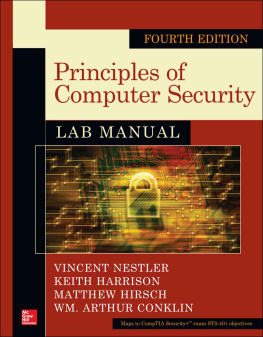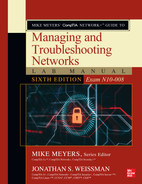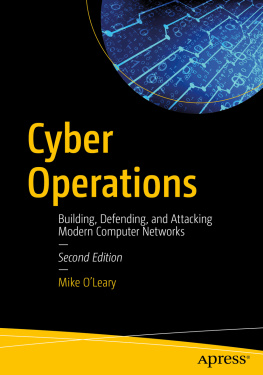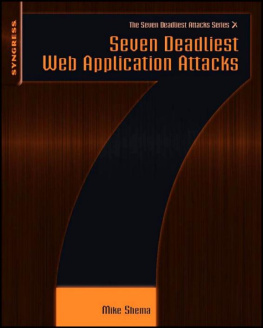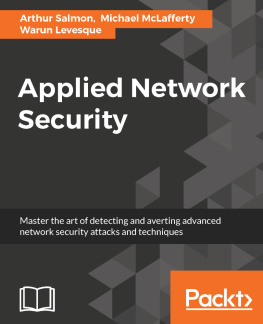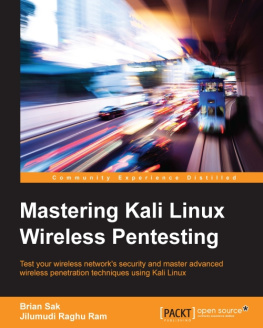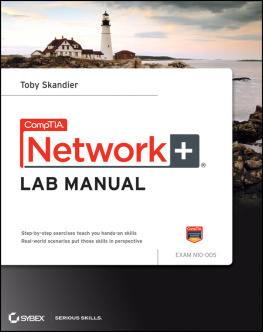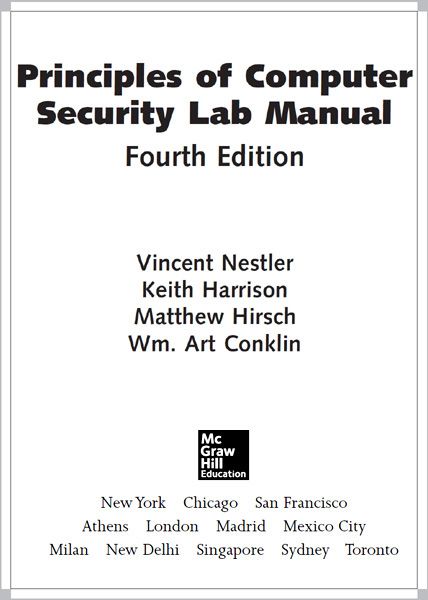Copyright 2015 by McGraw-Hill Education. All rights reserved. Except as permitted under the United States Copyright Act of 1976, no part of this publication may be reproduced or distributed in any form or by any means, or stored in a database or retrieval system, without the prior written permission of the publisher. ISBN: 978-0-07-183656-2
MHID: 0-07-183656-X The material in this eBook also appears in the print version of this title: ISBN: 978-0-07-183655-5, MHID: 0-07-183655-1. eBook conversion by codeMantra
Version 1.0 All trademarks are trademarks of their respective owners. Rather than put a trademark symbol after every occurrence of a trademarked name, we use names in an editorial fashion only, and to the benefit of the trademark owner, with no intention of infringement of the trademark.
Where such designations appear in this book, they have been printed with initial caps. McGraw-Hill Education eBooks are available at special quantity discounts to use as premiums and sales promotions, or for use in corporate training programs. To contact a representative please visit the Contact Us page at www.mhprofessional.com. Information contained in this work has been obtained by McGraw-Hill Education from sources believed to be reliable. However, neither McGraw-Hill Education nor its authors guarantee the accuracy or completeness of any information published herein, and neither McGraw-Hill Education nor its authors shall be responsible for any errors, omissions, or damages arising out of use of this information. This work is published with the understanding that McGraw-Hill Education and its authors are supplying information but are not attempting to render engineering or other professional services.
If such services are required, the assistance of an appropriate professional should be sought. TERMS OF USE This is a copyrighted work and McGraw-Hill Education and its licensors reserve all rights in and to the work. Use of this work is subject to these terms. Except as permitted under the Copyright Act of 1976 and the right to store and retrieve one copy of the work, you may not decompile, disassemble, reverse engineer, reproduce, modify, create derivative works based upon, transmit, distribute, disseminate, sell, publish or sublicense the work or any part of it without McGraw-Hill Educations prior consent. You may use the work for your own noncommercial and personal use; any other use of the work is strictly prohibited. Your right to use the work may be terminated if you fail to comply with these terms.
THE WORK IS PROVIDED AS IS. McGRAW-HILL EDUCATION AND ITS LICENSORS MAKE NO GUARANTEES OR WARRANTIES AS TO THE ACCURACY, ADEQUACY OR COMPLETENESS OF OR RESULTS TO BE OBTAINED FROM USING THE WORK, INCLUDING ANY INFORMATION THAT CAN BE ACCESSED THROUGH THE WORK VIA HYPERLINK OR OTHERWISE, AND EXPRESSLY DISCLAIM ANY WARRANTY, EXPRESS OR IMPLIED, INCLUDING BUT NOT LIMITED TO IMPLIED WARRANTIES OF MERCHANTABILITY OR FITNESS FOR A PARTICULAR PURPOSE. McGraw-Hill Education and its licensors do not warrant or guarantee that the functions contained in the work will meet your requirements or that its operation will be uninterrupted or error free. Neither McGraw-Hill Education nor its licensors shall be liable to you or anyone else for any inaccuracy, error or omission, regardless of cause, in the work or for any damages resulting therefrom. McGraw-Hill Education has no responsibility for the content of any information accessed through the work. Under no circumstances shall McGraw-Hill Education and/or its licensors be liable for any indirect, incidental, special, punitive, consequential or similar damages that result from the use of or inability to use the work, even if any of them has been advised of the possibility of such damages.
This limitation of liability shall apply to any claim or cause whatsoever whether such claim or cause arises in contract, tort or otherwise. Chocolate of coursemy Ancient Love. Morning and nightIm thinking of. Because of youtwo types of dayone youre herethe other away. Vincent NestlerI would like to thank my parents, Donald and Karen, for encouraging and supporting me and my endeavors. Keith Harrison
About the Authors
Vincent Nestler has a PhD in instructional design and an MS in network security from Capitol College, as well as an MAT in education from Columbia University.
Keith HarrisonAbout the Authors
Vincent Nestler has a PhD in instructional design and an MS in network security from Capitol College, as well as an MAT in education from Columbia University.
He is a professor at California State University San Bernardino and has more than 20 years of experience in network administration and security. He has served as a data communications maintenance officer in the U.S. Marine Corps Reserve, and he designed and implemented the training for Marines assigned to the Defense Information Systems Agency (DISA) Computer Emergency Response Team. He also served as the assistant operations officer (training) for the Joint Broadcast System during its transition to DISA. Since 2007, he has been integral to training CyberCorps students both at Idaho State University and at California State University San Bernardino. He is a professor of practice in information assurance at Capitol College.
His professional certifications include Red Hat Certified Engineer, Microsoft Certified Trainer, Microsoft Certified Systems Engineer, AccessData Certified Examiner, AccessData Mobile Examiner, and Security+. Keith Harrison has a PhD in computer science from the University of Texas San Antonio. Dr. Harrisons doctoral dissertation was on the scalable detection of community cyberincidents utilizing distributed and anonymous security information sharing. His research interests include community cybersecurity, information sharing, cryptography, peer-to-peer networks, honeynets, virtualization, and visualization. In addition to his research activities, Dr.
Harrison is the lead developer of the Collegiate Cyber Defense Competition (CCDC) Scoring Engine and the CyberPatriot Competition System (CCS) Scoring Engine. He also enjoys assisting in the operation of the National Collegiate Cyber Defense Competition (NCCDC), Panoply King of the Hill Competition, and the CyberPatriot National High School Cyber Defense Competition. Matthew Hirsch has an MS in network security from Capitol College and a BA in physics from State University of New York (SUNY) New Paltz. Mr. Hirsch has worked in the information security operations group for a large financial firm, data distribution for firms including Deutsche Bank and Sanwa Securities, and systems/network administration for Market Arts Software. Formerly an adjunct professor at Capitol College, Katharine Gibbs School, and DeVry, Mr.
Hirsch also enjoys a long-term association with Dorsai, a New York City nonprofit ISP/hosting firm. Dr. Wm. Arthur Conklin, CompTIA Security+, CISSP, CSSLP, GISCP, CRISC, is an associate professor and director of the Center for Information Security Research and Education in the College of Technology at the University of Houston. He holds two terminal degrees: a PhD in business administration (specializing in information security) from the University of Texas San Antonio (UTSA) and the degree Electrical Engineer (specializing in space systems engineering) from the Naval Postgraduate School in Monterey, California. He is a fellow of ISSA, a senior member of ASQ, and a member of IEEE and ACM.
His research interests include the use of systems theory to explore information security, specifically in cyber physical systems. He has coauthored six security books and numerous academic articles associated with information security. He is active in the DHS-sponsored Industrial Control Systems Joint Working Group (ICSJWG) efforts associated with workforce development and cybersecurity aspects of industrial control systems. He has an extensive background in secure coding and is a co-chair of the DHS/DoD Software Assurance Forum working group for workforce education, training, and development.

